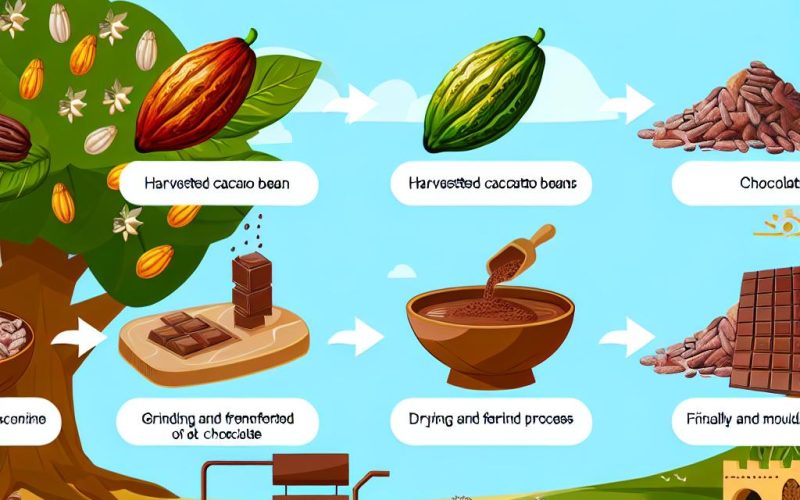The Origins of Chocolate
The history of chocolate begins in the lush landscapes of Central America, where it held a prominent place in the lives of ancient civilizations such as the Olmecs, Mayans, and Aztecs. These cultures placed a high value on cacao, recognizing it as an essential part of their daily lives and spiritual practices. Among these pioneering groups, the Olmecs are credited as the earliest known civilization in Mesoamerica to cultivate the cacao plant specifically for consumption. Their practices laid the groundwork for subsequent societies like the Mayans and Aztecs, who took cacao consumption to new heights by developing a frothy and often spiced drink made from ground cacao beans.
Cacao’s Cultural Significance
For these ancient societies, cacao transcended its role as a mere food item; it was a cornerstone of religious and ceremonial activities. The Mayans, for instance, held cacao in high esteem, believing it to be of divine origin and closely associating it with their deities. This reverence saw cacao featured prominently in various religious rituals and ceremonies. In Aztec society, cacao beans had an additional layer of significance. Beyond their use in creating the esteemed chocolate drink, the beans also served as a form of currency. This multifaceted use of cacao illustrates its profound importance in these cultures, where it held both economic and sacred value.
European Introduction
The journey of chocolate to Europe began with Spanish explorers, notably Hernán Cortés, who encountered cacao during their expeditions in the Americas. Cortés is frequently credited with bringing chocolate to Spain after witnessing its cultural and economic importance in Aztec society. The arrival of cacao in Europe marked the beginning of a new chapter for chocolate, as it was transformed to suit European tastes. Initially, chocolate was consumed as a drink, but Europeans modified it by adding sugar, vanilla, and other ingredients, making it more appealing to their palates. At the time, chocolate was a luxury enjoyed primarily by the elite classes, given the high costs associated with importing cacao from the New World.
Commercialization and Global Spread
The commercialization and global expansion of chocolate were made possible by advancements in trade and technology. By the 18th century, chocolate had become more widely available, leading to the establishment of chocolate houses in major European cities such as London and Paris. These establishments were forerunners of modern cafes, providing an area for people to enjoy chocolate drinks in a social setting. The 19th century was a period of significant innovation for chocolate. The development of solid chocolate bars marked a transformation from chocolate as a beverage to a versatile food. Swiss chocolatiers played a vital role in this evolution with innovations such as the conching process, which significantly improved the texture and flavor of chocolate. These advancements contributed to chocolate’s increasing popularity, setting the stage for its mass production and distribution.
Modern Chocolate Industry
In contemporary times, chocolate has grown into a global industry generating billions of dollars annually. While Central America remains a crucial region for cacao production, significant quantities are also cultivated in West Africa, cementing the region’s position as a key provider of the world’s cacao. The modern chocolate industry is characterized by a growing emphasis on sustainability and ethical sourcing practices. Consumers are becoming more aware of the environmental and social impacts of cacao production, prompting companies to adopt more responsible sourcing standards. Initiatives and resources such as the World Cocoa Foundation provide insights into ongoing efforts to improve the sustainability of the chocolate supply chain.
The journey of chocolate from its ancient origins in Central America to its present-day status as a beloved global delicacy reflects its timeless appeal and significant cultural impact. Through centuries, chocolate has maintained its charm while adapting to changing tastes and culinary practices. With ongoing innovations and a commitment to ethical practices, the story of chocolate continues to unfold, offering new opportunities and challenges for producers and consumers alike.
